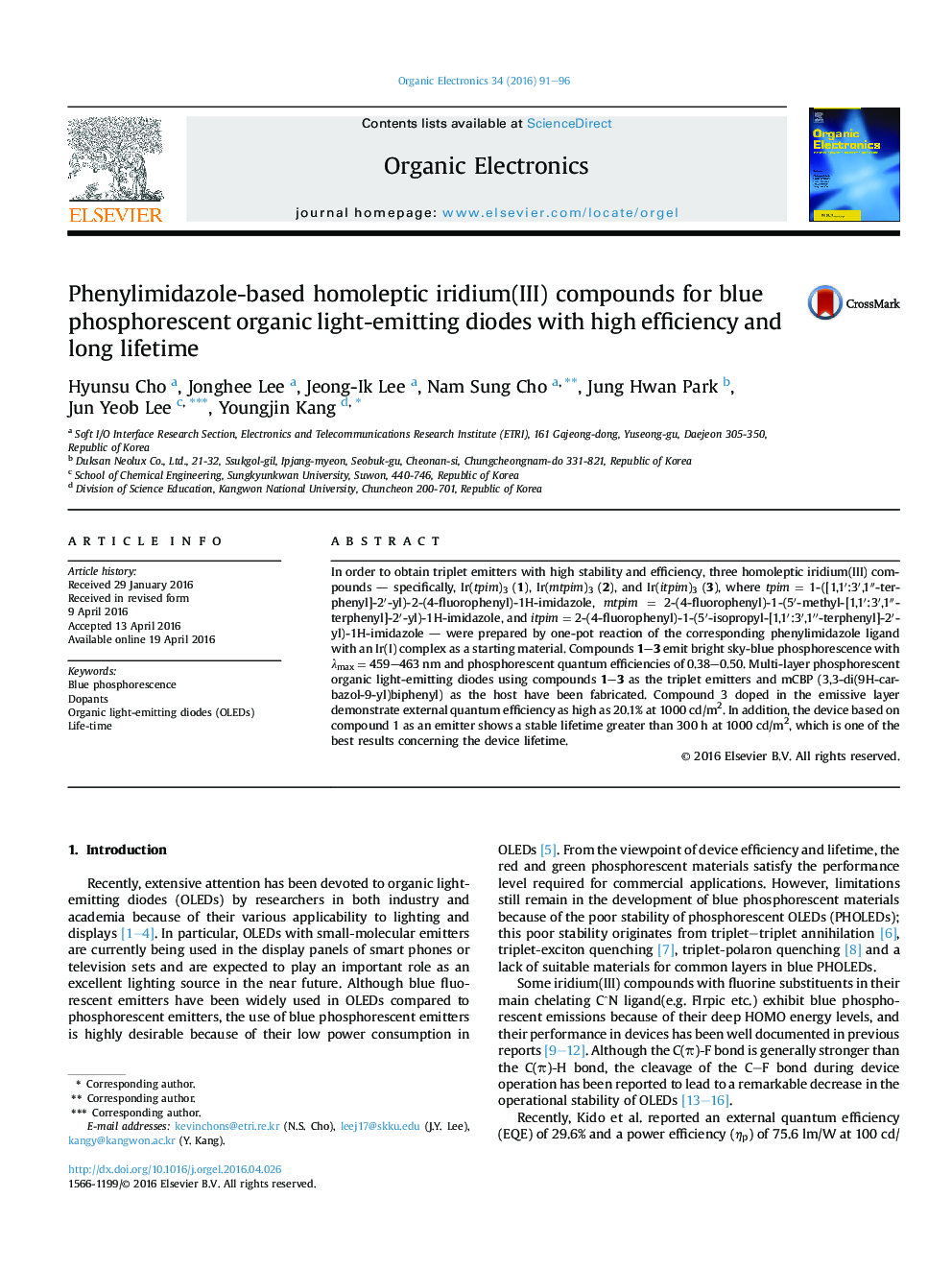| Article ID | Journal | Published Year | Pages | File Type |
|---|---|---|---|---|
| 1266904 | Organic Electronics | 2016 | 6 Pages |
•Three homoleptic iridium(III) compounds were proposed for blue phosphorescent OLEDs.•OLEDs with these blue emitters demonstrated highly efficient and stable characteristics.•The external quantum efficiency (EQE) of OLED devices was as high as 20.1%.•The device lifetime (LT50) is larger than 300 h at 1000 cd/m2.
In order to obtain triplet emitters with high stability and efficiency, three homoleptic iridium(III) compounds — specifically, Ir(tpim)3 (1), Ir(mtpim)3 (2), and Ir(itpim)3 (3), where tpim = 1-([1,1′:3′,1″-terphenyl]-2′-yl)-2-(4-fluorophenyl)-1H-imidazole, mtpim = 2-(4-fluorophenyl)-1-(5′-methyl-[1,1′:3′,1″-terphenyl]-2′-yl)-1H-imidazole, and itpim = 2-(4-fluorophenyl)-1-(5′-isopropyl-[1,1′:3′,1″-terphenyl]-2′-yl)-1H-imidazole — were prepared by one-pot reaction of the corresponding phenylimidazole ligand with an Ir(I) complex as a starting material. Compounds 1–3 emit bright sky-blue phosphorescence with λmax = 459–463 nm and phosphorescent quantum efficiencies of 0.38–0.50. Multi-layer phosphorescent organic light-emitting diodes using compounds 1–3 as the triplet emitters and mCBP (3,3-di(9H-carbazol-9-yl)biphenyl) as the host have been fabricated. Compound 3 doped in the emissive layer demonstrate external quantum efficiency as high as 20.1% at 1000 cd/m2. In addition, the device based on compound 1 as an emitter shows a stable lifetime greater than 300 h at 1000 cd/m2, which is one of the best results concerning the device lifetime.
Graphical abstractHigh efficiency and long lifetime are achieved in the blue phosphorescent organic light-emitting diodes by developing terphenyl modified phenylimidazole type phosphorescent emitters.Figure optionsDownload full-size imageDownload as PowerPoint slide
